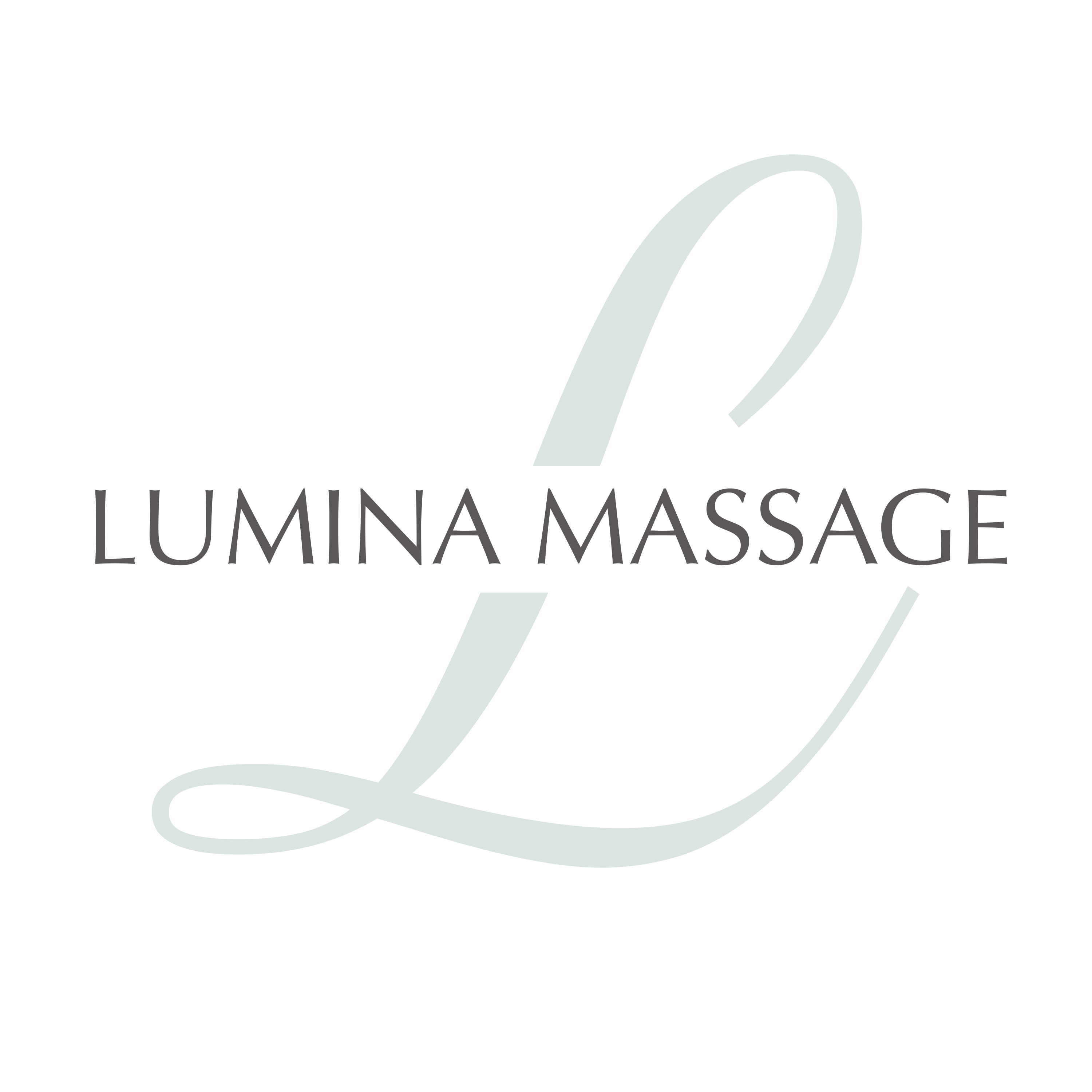Preventive Care and Massage Therapy
There are three components to using massage as part of preventive care. The physical, the mental and the emotional. The physical aspects known as the physiological, are the most commonly known about.
The Physical
When a good assessment is performed before the beginning of a massage therapy session issues such as muscle cramping, strain, sprain, spasm, a torn ligament, a pinched nerve etc. may be prevented. Once these injuries have occurred it is considered crisis mode and the massage style of choice is neuromuscular therapy for the purposes of rehabilitation. Once the person has achieved their goal, our greatest hope is that they would make a mental shift and consider preventive care massage. However, the ideal would be to use massage to prevent these conditions from occurring.
A Lifetime of Muscle Care
Anyone that has taken the time to study the marvel of the human body notices that all systems are deeply connected. Massage therapy affects many bodily systems indirectly but its treatment is focused on the muscular, nervous and the skeletal system.
From the moment you are born to the day you leave this earth, your muscles will and should be in use. From the incredibly active person to the quadriplegic that is forced into a sedentary life, the health of your muscles is important and if possible, the key is to bring it into a state of resilience and flexibility.
Assessment Before Session
Body Awareness
It is important to slow down and listen to your body. If you are scheduled to receive a massage for prevention, you may say to yourself “Nothing is wrong and I feel good.” If this is the case, congratulations! Despite this state, I invite you to take a few deep breaths and ask yourself, “Where have I been feeling muscle tension or pain?” In your mind, assess your body from the top of your head to the soles of your feet. This can also be done in the waiting area before seeing your massage therapist. Make a note to share with your therapist. It may seem insignificant but any area of the body that feels tight or sore is worthy of attention during your massage. If you’re unfamiliar with listening to your body’s signals, then this process may take a few minutes, however the more you practice the faster you’ll be able to identify what feels “off”. This skill is so useful that it has allowed people to differentiate whether they are feeling muscle pain or something more serious.
Trigger Point Map
Your massage therapist, will perform a physical assessment of your trigger points. These spots are located throughout the body and will indicate where your body is holding tension and pain that you were not consciously aware of. This doesn’t mean you are not listening to your body, simply that your mind has not registered this discomfort. Trigger points exist but if we knew our areas of pain twenty four hours a day, we wouldn’t want to leave our bed! The trigger point assessment that your therapist does creates a guide for them and a source of validation for you. Using a pain scale of 1-5, verbalize with 5 representing the highest level of muscular pain and 1 representing the least. This quick process takes approximately 2-3 minutes and will unlock valuable knowledge during your session. Even with a relaxing, full body massage, without a proper assessment, a therapist may blindly begin the session and miss the opportunity to prevent future injuries. The goal is to identify any muscle groups holding the highest level of tension and treat them, thus preventing future muscle spasms or other related injuries.
I cannot emphasize the importance of this assessment before every session. Your body changes and moves, even as you sleep and most certainly has changed from the day you scheduled your massage to the day you arrive to your appointment. You may have held a heavy object in one arm and strained it, underwent a series of heavy emotional events increasing your stress and possible tension or have even slept in an awkward position. To assess the muscles, even when you enter a massage session and believe you feel fine, chances are, there are areas in your body holding tension you were not even aware of. That is the power and benefit of preventive care in massage.
Preventing muscle cramps
Muscle cramps may stem from different sources and massage may help when it is an accumulation of muscle tension. Other ways that your muscle may cramp are the following
- side effects of medication
- dehydration
- diabetes and other diseases that affect the nervous system
- pinched nerve stemming from the spinal column
- mineral or vitamin deficiency
- accumulated tension from overuse
The last is the condition that massage helps in relieving the built up tension from receptive use and strain. For example, if you drive all day and are consistently flexing your calf muscle then tension can produce cramping. To prevent muscle cramping locate the source, eliminate all other possibilities and if the result is due to muscle tension then massage is an excellent therapy for relief.
Preventing muscle spasms
While cramps are short lived and repetitive, in other words they come in waves, muscle spasms are constant. Muscle spasms can also originate from the reasons listed above. However, the majority of spasms occur when muscle tension has reached a peak and cannot sustain any more tension. Constant use and a lack of proper recovery time sends the muscle into a state where it sends a signal to the central nervous system, then to the brain notifying you that there is pain.
Massage is an excellent method of preventing muscle spasms that can leave you in a state of debilitation. Yes, that’s right. An extreme muscle spasm will send you to your knees in pain. However, with good assessment and regular massage therapy, spasms that originate due to repetitive use and stress can be prevented. By the way, muscle knots also fall into this category. The adhesions formed in a muscle tissue are another form of continuous stress manifested in a way that feels like a concentrated hard lump. Massage can be used to prevent these as well.
Conclusion
Practicing healthy habits and preventive measures is wise and a great way to avoid disease, illness and pain. Of course, good health is never guaranteed in the face of tragedy, accidents or genetics. While, it’s in your power and ability ,make the choice to invest your time, energy and finances into a caring for your body and taking measures to protect yourself. You’ll be glad you did.

